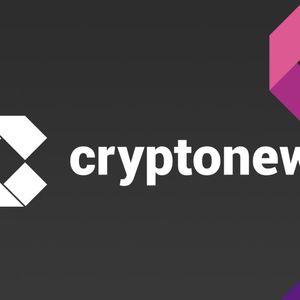Recent global policy changes triggered significant volatility across financial markets, highlighting the fragility of speculative assets. Bitcoin, despite seeing an ATH of $109,000 owing to pro-crypto US policies, saw its price decline to $75,000, back to pre-election rates. AI tokens and memecoins dipped by almost 50% . The only sector that remained stable was the real-world asset (RWA) tokens and stablecoins. The crypto market’s recent correlation with the stock markets, Federal Reserve interest rate cuts, and geopolitical happenings indicate how the ‘inflation-hedge’ narrative is weakening. The crypto market needs to seek real-world use cases and projects that drive real value, are sustainable, and ethically sound. Projects like Caiz are setting precedents for ethical projects that use robust applications like RWAs and stablecoins to build sustainable, all-inclusive ecosystems. Let’s explore what makes RWAs the future of stable assets. What Are RWAs? Why Do They Matter? Real-world assets, or RWA tokens, represent a physical or digital asset or asset right on a blockchain. Tokenization is the process of moving assets or asset rights on-chain. RWAs can represent physical assets like gold, diamonds, real estate, art, wine, etc., and they can also represent intangible assets like music, time, education, logistics, etc., and asset rights like copyrights, rent, leasing, IP rights, etc. McKinsey expects the RWA market to reach $30 trillion . Currently, it stands at $17.98 billion with 88,401 holders . After BlackRock’s BUIDL Fund on Ethereum, many other big institutions have launched their tokenized funds on Stellar, Solana, and other chains. Over 50% of institutional investors are interested in investing in RWAs. Tokenization of assets is also a significant goal of G7 countries. Tokenized U.S. Treasury bonds are worth $2 billion today, providing holders with sustained yields of 5% or more. Institutions are rushing to embrace tokenization despite their skepticism towards crypto. There’s a big reason for that. Tokenizing assets and converting them into RWA tokens provides additional security for blockchains. RWAs can easily protect user data, enable privacy and other payment related information. They can enable fractionalization of assets, which makes collective ownership of a single asset possible. RWAs are traded 24/7 across the globe, bringing accessibility to rather illiquid and accredited assets. By bringing efficiency and automating administrative processes, RWA tokens can also bring cost efficiency. Stablecoins are the earliest and the biggest RWA sector today. Stablecoins are pegged to fiat cryptocurrencies like the US dollar, Turkish Lyra, gold, etc., in a 1:1 ratio. Recently, the stablecoin volume has surpassed the combined volumes of Visa and Mastercard. That’s no mean feat. Compliant RWAs are even more favorable options for wider adoption. After MiCA regulations forced many exchanges to delist USDT, the largest stablecoin by market cap, USDC grew 32x in those regions because of its compliant nature. Why RWAs Beat Traditional Crypto RWAs bring the best of both worlds. They imbibe all the virtues of cryptocurrencies as they are also based on blockchains. RWAs are decentralized, transparent, secure, immutable, and traceable. But unlike cryptocurrencies, they are backed by real-world assets. Their price isn’t based on speculation. Rather, they derive their value from the assets underlying them. The RWA market has grown eightfold in the last two years, and more and more banks are using stablecoins to exchange value between themselves. The 2025 crypto crash that followed major global policy shifts shows that RWAs are far less prone to volatility, speculative swings, and manipulation than most conventional crypto assets. RWA Projects Are Consistently Outperforming Binance Research findings reveal that RWA tokens have remained a safer investment than even Bitcoin during the recent crypto crash. Bitcoin fell by 19%, Ethereum by 44%, DeFi market by 31%, and the total crypto market cap fell by 25%. Around $5 trillion was wiped from the S&P 500 in 44 consecutive trading sessions. The Us stock market lost over $11 trillion, around 38% of the US GDP! Only 3% of investors preferred Bitcoin as a top asset in the trade war. Bitcoin is by far the safest crypto asset and among the largest assets in the world. If the crypto market has to survive and seek greater adoption, it has to transition into utilities and use cases that make a real-world impact, and RWAs present that very opportunity. Projects like Caiz Finance deserve special mention here. Caiz Finance lives up to the ethos of sustainable, responsible finance. It is the first Sharia-compliant blockchain ecosystem based on a hybrid model. It encourages stable, speculation-free finance by leveraging RWA functionality to drive real-world utility and impact—moving past the hype-driven, interest-focused nature of typical DeFi protocols. Its dual-layer architecture controls funding sourcing and compliance to keep regulatory pressures at bay, and the decentralized layer provides the benefits of RWAs. Through its innovative product GRAINS (Green Real Asset Intelligent Network of Stability), Caiz is bringing together RWA, AI, and stablecoin functionalities so anyone can build their RWA products on the Caiz Chain in an ethical, transparent, and stable way. Future Outlook of The RWA Sector RWA projects are maturing and garnering institutional adoption for their resilience and real-world benefits. Hybrid finance projects such as Caiz are the future as they combine trust-based, compliant traditional systems with trustless blockchain products within their own ecosystem for the masses to utilize. The world is going digital-first, and digital finance, too, needs to be ethical, sustainable, and drive financial inclusion of the masses. Disclaimer: This is a sponsored press release for informational purposes only. It does not reflect the views of Times Tabloid, nor is it intended to be used as legal, tax, investment, or financial advice. Times Tabloid is not responsible for any financial losses. The post Crypto’s Big Reset: Why Real-World Assets Are the Future of Stability and Trust appeared first on Times Tabloid .

















